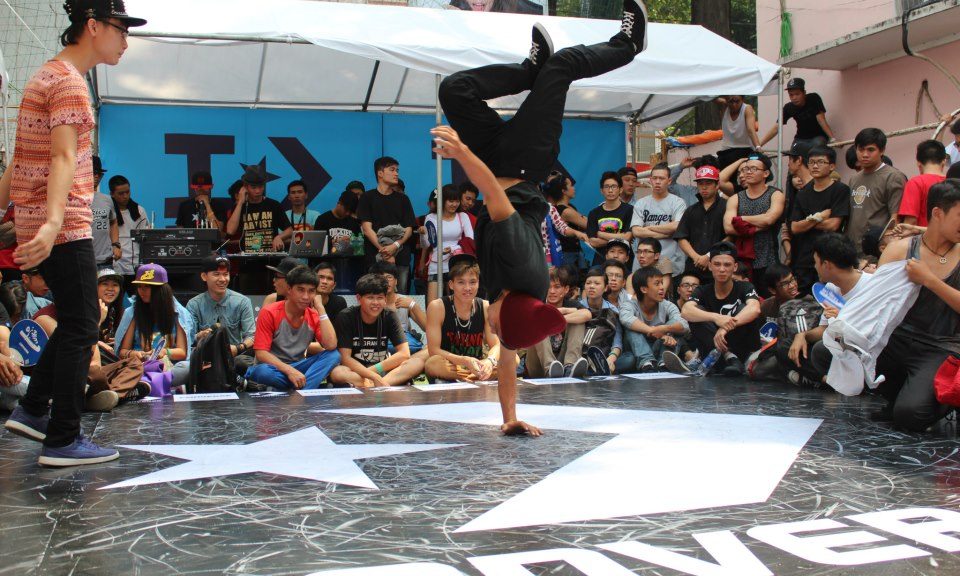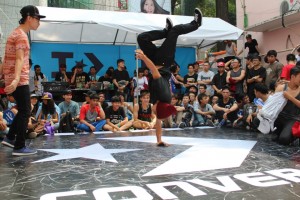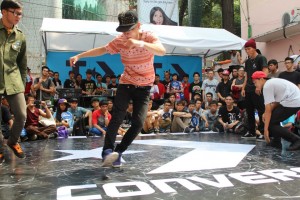How to Choose Your Summer Music Festival
Spring is upon us, and as such, so is music festival lineup season.
If your favorite music festival hasn’t released its lineup schedule already, it will in the next month or two rest assured.
But what about those who don’t have a favorite festival? How do you choose between two festivals that have almost identical lineups?
If you don’t already know, there’s so much more to music festivals then just the lineups they host.
You need to take into account the culture of each festival, and the spirit that drives it.
If you want to make the most of your music festival filled summer you have to pick a festival that not only matches your music taste, but also your personality.
I’ve collected a wide range of information detailing my personal accounts and opinions of festivals I’ve attended, and festivals that some of my closest friends have gone to.
If you’re hoping for a cold analysis of each festival then you’re reading the wrong article.
This is a tutorial to help those who have no idea what they’re getting themselves into and need a guiding light before taking the musical plunge.
Lollapalooza – Chicago, IL
“Lollapalooza is a great place to start your festival career, a real beginner experience.”
Ok so that’s no way to sell a festival, I know, but bear with me ok? Lollapalooza isn’t a festival I would undersell or oversell by any means.
It was the first musical festival I ever went to so it’ll always have a special place in my heart.
It’s an exciting feeling. You’re surrounded by downtown Chicago, but not to the point of being claustrophobic, and you have a great breeze coming nonstop from Lake Michigan.
What should you expect at Lolla?
Lollapalooza is a great place to start your festival career, a real beginner experience.
It always has a popular lineup, and the people there are pretty spread across the spectrum of personalities you’d see at a music festival.
You’ll see a healthy dose of ravers, frat boys, mid-life crisis dads, high school kids, and then some normal everyday people thrown in the mix.
It’s enough diversity to keep Lollapalooza from skewing into one type of audience direction, but enough that you’ll feel at home no matter what type of festival goer you identify as.
What’s the venue like? Should I have safety concerns at all?
The venues and stages are gigantic so you’ll never have to worry about being to far back, but there’s also plenty of room at each stage to lie down at the back of the ground and mellow out to your favorite band.
The police and security presence is very comforting. They’re there to help you, not to ruin your life, so just don’t mess with them and they won’t mess with you.
Personally, I’m over the whole Lollapalooza hype fest that happens every year. It was a great first experience but my tastes have become more experienced now.
Bottom Line: If you’re new to the whole festival thing, have about $500 bucks sitting around, and don’t mind some debauchery, Lollapalooza is probably the festival for you.
Cheap and Similar Alternative: North Coast (Illinois)
Lollapalooza’s 2015 lineup has not been released yet, but you can listen some of my favorite tunes and bands from their 2014 lineup here.
Bonnaroo – Manchester, TN
“Also, the toilets were surprisingly top notch, had no fear of pooping or getting herpes.”
Ahhh Bonnaroo, home of the hippies and land of the free. Bonnaroo gets a lot of bad rep for being a smelly, hippie ridden, and overall dirty festival, but it is all that and so much more.
Bonnaroo, or Roo (as it is lovingly called), is a magical land filled with some of the friendliest festival goers you will ever meet.
Honestly, I have some great memories of getting lost from my friends and for making new friends out of complete strangers.
Everyone is seemingly there for the same reason: good vibes and good music.
Two years ago I attended Roo with my good friend, Alejandro and he’s been in love with the place ever since.
What did you like most about Bonnaroo?
“The atmosphere, people, and festival grounds were incredible. Just such a cool vibe, everyone was extremely friendly. You could talk to anyone about anything.
Not really judgmental, not to many frat bros, real people that were really nice. Also, the toilets were surprisingly top notch, had no fear of pooping or getting herpes.”
What kind of advice would you give newcomers to Roo?
Bonnaroo is focused on the camping and immersive atmosphere that few festivals obtain. You go for 4 days, camp out surrounded by strangers, and go see your favorite bands throughout the day.
But wait, there’s more! There are also art exhibits, comedy shows, food vendors from around the nation, beer tastings, and the list goes on.
I remember this encampment next to mine, back in 2012, spending the entire 4 days building this open-air library and phone charging station for anyone to use. They made tire swings and cots for folks to enjoy, and man was it popular.
So what’s it like to go to the Roo for the first time?
“Surreal, like a kid at a toy store,” says Alejandro. “So many cool things and so many people.
I wish I had more time to explore and do everything that they had to offer. One day I’ll actually make it to the comedy tent for once! You just can’t find time to do everything.
Bottom Line: Bonnaroo will set the standard for your music festivals. It has an almost religious following amongst it’s goers, and is easy for any music lover to enjoy. As long as you like camping, Roo is for you.
Cheap and Similar Alternative: All Good Festival (West Virginia)
Bonnaroo’s 2015 lineup has been released! It’s pretty stacked and promises to be a grand time for all. Here are a few of my favorite tracks and bands to watch out for there, you can listen here.
Coachella – Indio, CA
“Sometimes it felt more like a fashion event than a music festival.”
So now we begin to delve into uncharted festival territory for me. Coachella is a festival that I’ve always heard about, but never had the money to attend.
It’s set in glamorous California, and from what I’m told, the people organizing this festival know exactly what they’re doing.
The grounds are located on a gigantic polo field, so it’s really easy to get around and probably only a 5 minute walk from one side of the venue to the other.
I really have to back off of this discussion, however, and leave it to my close friend Jonny Swift, keyboardist and producer for local Chicago Electronic Rock band “Super Hairy,” to describe because anything I tell you at this point is just conjecture.
What did you like most about Coachella?
“We liked a lot about Coachella! We had an awesome time.
The lineup and music were great, some of our favorites were Pretty Lights, TNGHT, Purity Ring, C2C, Alt-J, Yeasayer, Hot Chip, the fact that it’s in SoCal in the desert surrounded by mountains, and so much more.
The food was delicious and siphoned off into one section of the festival grounds, although expensive, the art installations and decorations were really cool, there was a giant ferris wheel you could ride, and all in all the festival was just organized really well.”
Did you dislike anything though? I’ve heard some wicked rumors about the atmosphere.
“We disliked a few things actually. The drinks were extremely overpriced, the check-in people at the gates to the festival were very strict and thorough and rough and searched everything, the porta pottys were always disgusting and never stocked with toilet paper, I don’t think they cleaned them once all weekend, and overall the crowd was kinda rude.
Not a very friendly crowd at all, and it seemed like a lot of people weren’t there for the music, but just to try to see celebrities and get into the fashion scene.
That’s one of the main things I didn’t like- sometimes it felt more like a fashion event than a music festival.
Other than that, the only other thing I can complain about is that our camping site was a decently long walk to the festival grounds- about a 15-20 minute walk.”
So why did you choose to go all the way to SoCal for this festival?
“We chose to go to Coachella because the lineup was amazing and had a ton of our favorite artists, and because it was in SoCal!
And because it’s Coachella, duh. When we first got there, we were obviously super excited but also nervous because we’d never done a camping music fest before- only Lolla, North Coast, and Pitchfork beforehand.
After we flew in, we had to rent a car and stop at a Wal-Mart on the way to stock up on everything we needed for camping all weekend.
The coolest story I have from Coachella is that I got to meet all the members of both C2C and Alt-J after their performances on Friday afternoon.
Chatting with them was definitely one of the highlights of the trip.”
Bottom Line: Festival of the stars. Go for the culture, stay for the music.
Cheap and Similar Alternative: SXSW (Texas)
Coachella’s 2015 lineup is STACKED with good music. Seriously. I don’t think I could name another festival with a lineup this badass. Here are some of my favorites!
Electric Forest – Rothbury, MI
“There is a crazy strong spirit of reciprocity and respect flowing throughout the Forest, and it’s absolutely contagious.”
I’m so embarrassed. Another festival I’ve never been to before. However, this time I can say I’ll have Electric Forest taken off my bucket list this summer. Bought my tickets and could not be more excited. To help me explain my excitement I again have Jonny Swift of “Super Hairy” and also my close friend Philip Albers.
What did you like best about Electric Forest?
Jonny Swift: “Electric Forest was one of the best experiences of my life. It was ABSOLUTELY AMAZING! It’s gonna be hard to describe it in words but I’ll try.
By far, it’s the best music festival I’ve been to and one of the most amazing places I’ve been period. Coachella was awesome and I love Lolla, North Coast, and Pitchfork, all of which I’ve been to multiple times, but none of them can compare to EF.”
Philip Albers: “Electric Forest is my most anticipated music event every year, partly because the lineup and music is so good, but mostly because of the people and the atmosphere.
The attendees are all considerate and friendly people, and give the festival a sense of unity and harmony that is unmatched in any other concert or festival I’ve gone to.
Also the venue is in a beautiful pine forest, and is looked after by the attendees.”
So was there anything to dislike?
Jonny Swift: “There were few things I disliked, but they’re pretty nitpicky. Shower lines could sometimes be quite long, and it cost $10 per shower.
Other than that, the only thing I could complain about is that the festival grounds can sometimes feel quite large if you don’t know your way around, and it can take a decent amount of time to get from one side of the festival to the other.”
Philip Albers: “There isn’t much I dislike about the Forest. However, 2014 saw the first ticket sell out of Electric Forest, and it seemed as if the number of people really increased the congestion and anxiety of moving from stage to stage.”
What can be said about the atmosphere of the festival?
Jonny Swift: “There is a crazy strong spirit of reciprocity and respect flowing throughout the Forest, and it’s absolutely contagious.
I’ve never experienced a crowd at a music fest that was so friendly and respectful towards everyone and everything around them.
I usually hate crowds at concerts or music fests or large events, but nearly everyone I met, strangers, volunteers, everyone, was extremely friendly and helpful.
I don’t think I’ve ever talked to more strangers or made more momentary friends that quickly in my life.
Everyone is just there to have a good time and make sure everyone else is having a good time as well!
My fiancé has said multiple times that she sees it as a utopian mini-society that gives a glimpse of how society could be if everyone treated each other with love and respect.”
Any good stories to share?
Philip Albers: “There are countless stories I could share about Forest. One in particular kind of epitomizes the atmosphere though.
In the Forest there is this sacred little place called the Giving Tree, the concept is that you take something and you leave something.
It could be something of great personal value or something completely trivial.
My first year we paid many-a-visit to the giving tree, offering up cigarettes and mysterious tokens we picked up on the way for things like lighters and other mysterious tokens.
The third night, after some vigorous dancing, our group convened and one member realized his necklace had come off.
This necklace was a simple sterling silver charm he got from his grandmother, though not completely vital to survive the Forest, he was understandably bummed.
We looked through forests of feet on the dance floor, searched lost and found, asked strangers, and finally paid one more visit to the giving tree.
There the little necklace was found totally in tact. This is not so uncommon in the Forest; things have a way of working themselves out there where everything just seems to go right.”
Bottom Line: An electronic wonderland filled with some of the friendliest people you’ll ever meet. Come for the wub wub, stay for the love love.
Cheap and Similar Alternative: Shambhala (British Columbia)
The Electric Forest 2015 lineup is set to be mind blowing. Hold onto your underpants folks, you’re in for a wild ride. Listen to some of my favorite tracks from the lineup here.
Pitchfork – Chicago, IL
“Hipsters and kids everywhere, what has my life become?!”
Pitchfork is most known for the music columns online. Everyday they release 5 to 10 album reviews, in-depth interview cover stories with big name artists, and are basically revered as musical gurus by most of the hardcore music fan community.
I went to Pitchfork for the first time the summer of 2014 and loved it. Real easy to navigate, very clean, and everyone was very friendly.
You could really tell that everyone was there for the music. They didn’t come to get trashed and they weren’t there to tell you your music taste was shit either.
They always have a great lineup, and even if you don’t recognize the bands you can be sure you’ll like them on at least a basic level.
My good friend Alejandro has been a regular attendee at Pitchfork for the last 3 years (mainly because his hipster roommate used to drag him there kicking and screaming) and had a few things to say about the festival.
So what did you like most about Pitchfork?
“Pitchfork has a nice lineup, real cheap prices, and the crowd is always interesting.
My first reaction when waiting to get in though? Hipsters and kids everywhere, what has my life become.
The festival is filled with the type, but if you are on the level, or can at least tolerate it, you’ll be fine. “
Bottom Line: If you’re the type who is always up to date on the new hot album release, and loves discussing music in depth, then Pitchfork is for you.
Cheap and Similar Alternative: None. It really doesn’t get cheaper than this for the quality of the lineup.
Hosted by the highly regarded Pitchfork magazine, this festival’s 2015 lineup promises to deliver its audience fantastic up and comers, as well as some incredible veteran performers. Listen to some of the tracks here.





